Thatching - introduction
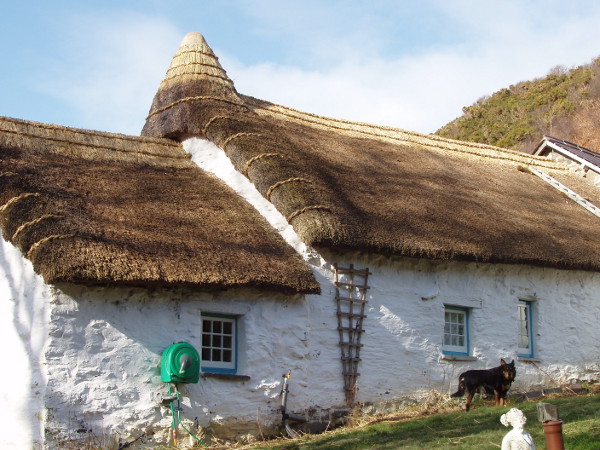
“Local building materials always form a harmonious feature in the landscape. The best example is the large number of straw-thatched dwellings to be found in the villages throughout our major wheat-growing counties.” – W E C Morgan
What is thatching?
Thatching is the use of dry vegetation to provide a roof covering. Currently in the UK, this is normally straw, reed or sedge, but has included heather, rushes, fine twigs from coppicing called brash and even shavings from the cricket bat industry!
Vegetation (for example, palm leaves) has been used for roofing in tropical countries since time immemorial, and is still used widely today. In Europe, thatch has probably been used since the Neolithic period and was the material of choice for most homes until around 1820 as it used cheap, locally-available materials. With the arrival of canals and railways, transportation of cheaper, easier-to-install alternative materials such as slate became viable and thatch fell from favour.
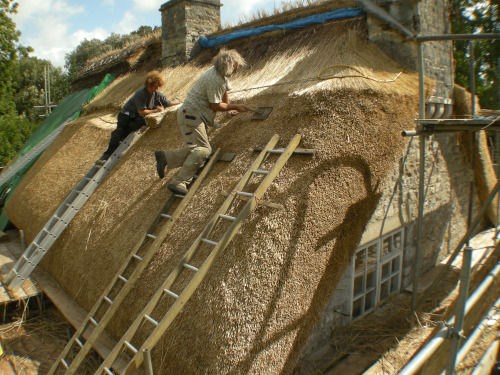
By far the most popular material is straw, but reed is also used – especially in the east of England. The mechanisation of harvest, introduction of new short-growing varieties of straw from the late 1930s and increased usage of fertilizers in the 1960s and 70s resulted in a lack of suitable straw. However since then specialists have started to grow old varieties and there has been a resurgence in thatch in the last 30 years. It’s estimated that the UK and Ireland have the highest level of thatch in Europe with around 100,000 properties.
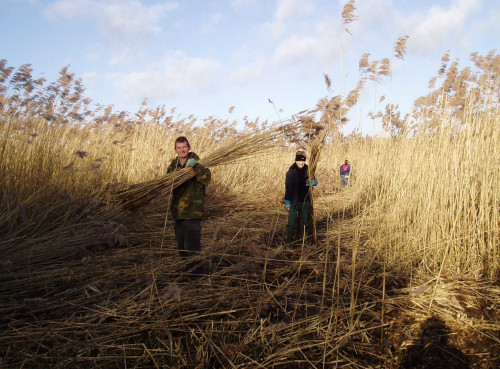
What are the benefits of thatching?
- Thatching is a very sustainable method of roofing, and can make use of recycled, local and natural materials – which can also make it quite cost-effective.
- Materials chosen have traditionally been available locally and were often the ‘waste’ product of other activities. This may no longer be the case due to changed farming methods and a lot of water reed coming from Turkey, eastern Europe and China. However, they don’t require the use of scarce resources, quarrying or high levels of energy to produce, and their lightness means that they require less fuel for transportation.
- A well-laid traditional straw thatch can be expected to last 30 to 40 years (and reed 70 years). The old thatch is rarely removed and a top layer called ‘spar coating’ is added, which results in the thatch getting thicker with age, and accumulated depths of over 2 metres are not uncommon. It’s estimated that over 250 properties in southern England have base coats over 500 years old. This depth of thatch of course adds a lot of insulation to a property.
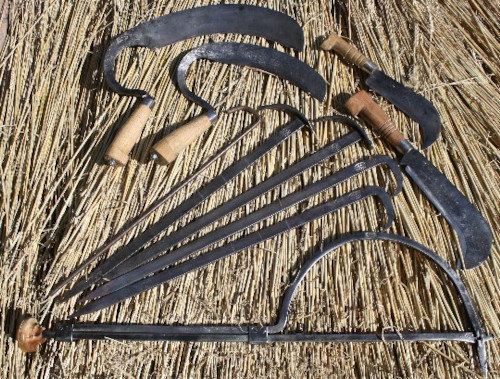
- Thatch copes with unusual and irregular roof shapes easily as it does not need a perfect fit to be effective.
- Provided the quality of materials and their application is correct and the roof ideally has a pitch of at least 50 degrees (although some thatched roofs in the west of Britain are less than this), water will run off and air pockets in the thatch will make it warm in winter and cool in summer. It also has very good wind resistance when applied correctly.
- As thatch is light, roof structures don’t need to be designed to carry a heavy weight, and the requirement for a 50 degree angle can provide a very usable roof space.
- A typical thatched roof has a U value of 0.35 – about the same as 4 inches of fibreglass insulation in the joists. Thatch also provides excellent sound insulation.
- As thatch is a less-common construction material, you may find insurance is not available from all companies. However, there is a good selection of specialists such as NFU mutual, who will be happy to provide a quotation.
- In case of societal breakdown / the breaking of long supply chains, it would be very beneficial for communities if roofs could be constructed from local, renewable materials like thatch, wooden shingles or slate if it’s available. It’s not necessary for everyone to gain those skills, as long as there’s a thatcher or two in the community.
What can I do?
To find a thatcher, see the National Society of Master Thatchers.
If you’d like to DIY, there are courses available that will teach basic thatching skills, but to become a fully-qualified thatcher means a 4 to 5 year apprenticeship. This will need to be arranged with a local master thatcher and can be hard to come by, since you’ll be costing them both time and money for at least the first 2 years.
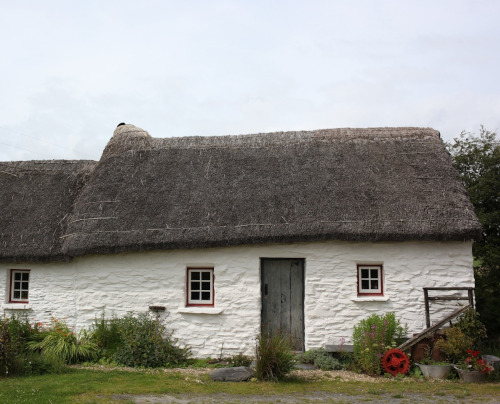
Here’s some more reading:
- Thatch and Thatching, from English Heritage (20 pages).
- A Guide to the Repair of Thatched Roofs, produced by the Irish government (70 pages).
- The Thatchers Craft (236 pages)
- Thatching and Thatch, a great free resource with information on the thatching traditions in different parts of the UK – down to county level.
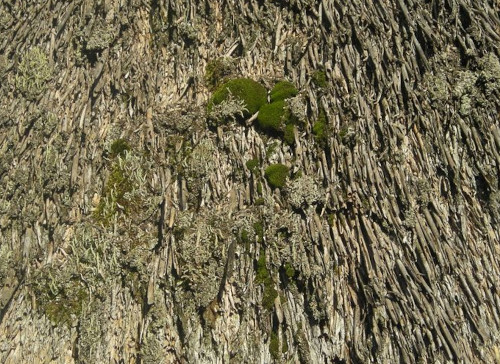
There are people who have managed to thatch their own properties after a short course and support and expertise is available, ranging from online ‘how to’ guides through one-day introductory courses to thatchers who are prepared to provide ongoing assistance and education in the construction of your own roof.
Realistically it’s only likely to be appropriate on a property that’s been specifically designed for a thatched roof due to the requirement of at least a 50 degree slope. As a rough guide approximate cost per square metre of surface area is around £120 if professionally done (don’t forget there’s a large overhang all round), but this can be reduced significantly if you do it yourself. Material costs can vary widely depending on location and that year’s harvest. As with any tradesperson, you tend to get what you pay for and should check for membership of regional associations and insurance before you contract for any work.
Fire is surprisingly not much more of a risk than with other roofs. Well-laid thatch is hard to ignite, although once lit thatch is very hard to put out. It is combustible though, and care should be taken to limit potential fire risks in the vicinity of thatch. Particular care should be taken if a wood-burning stove is to be used, as temperatures well up the chimney can reach 600ºC. Traditionally, especially in Ireland and the Isle of Man, a fire barrier was created with a layer of turf under the thatch – called scraw.
There should be very little maintenance required on a thatched roof. Moss may grow on it, but it shouldn’t cause any problems and can be ignored. The ridge wears away with time though, and may need replacing every 10 to 15 years. A thatched roof life expectancy can be 30% less if the roof is in the west of Britain due largely to rainfall figures and the pitch of the roof not usually being so steep.
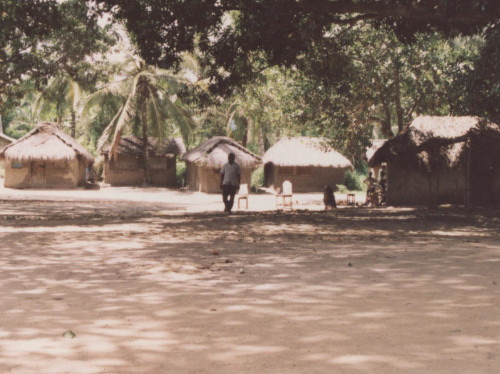
Thatching type will be specified in planning permission in some areas, normally restricting you to the material traditional to that area. See your local planning department for details. Tools can be purchased from specialist blacksmiths, and materials are available from a number of online notice boards. However, since quality is fundamental to the effectiveness and durability of your roof it may be advisable to seek expert assistance in sourcing the correct materials.

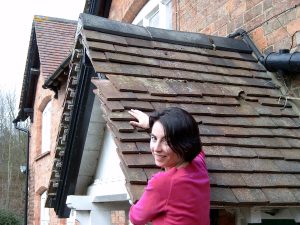
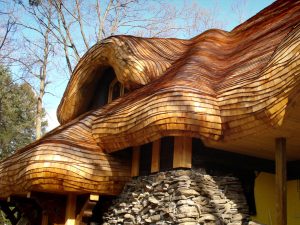

4 Comments
Actually Holland has the most thatched roofs in Europe with over 200,000. The uk has around 60,000 and Ireland less than 4,000.
Hi Peter – do you have a link?
Wikipedia says: ‘Although thatch is popular in Germany, The Netherlands, Denmark, Belgium and Ireland, there are more thatched roofs in the United Kingdom than in any other European country.’
But http://thatchers.eu/content/holland says that 4-5000 new thatched roofs are being built each year in the Netherlands, which is impressive, but can’t find the 200k figure anywhere.
Hi
I. Looking at a general weeks introduction course in thatching for next year.
Have you got next years programme please and costs.
Mr Dance – we don’t run courses I’m afraid.